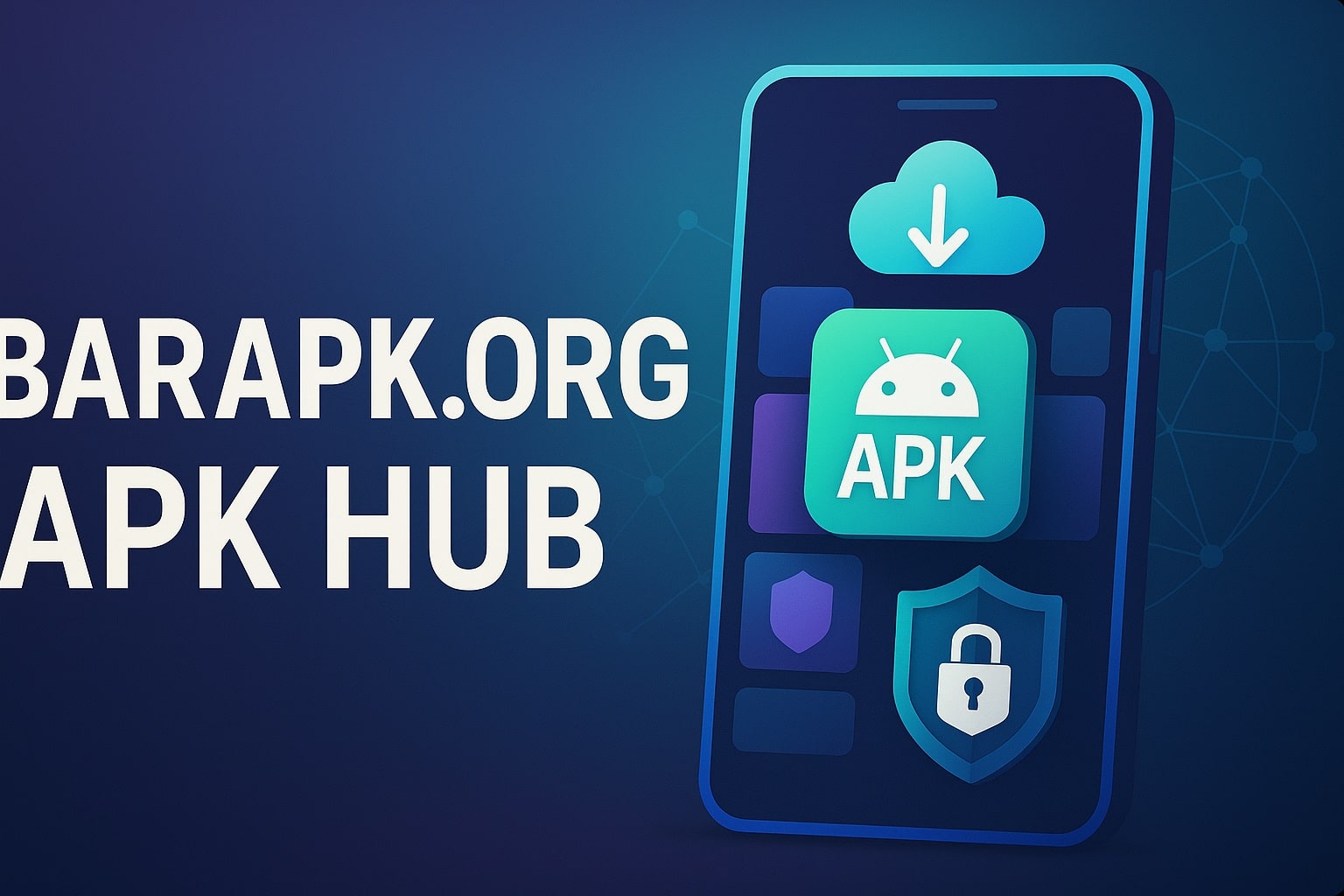I didn’t plan on becoming “that person” who knows way too much about APK repositories. But after one too many app updates broke the features I relied on, I started looking for alternatives and that’s how I ended up exploring barapk org. What follows is a first-person, boots-on-the-ground account: how I approached it, what I learned, the risks, the rewards, and the routines I now use to keep my Android life sane (and safe). If you’re APK-curious and want a participant’s view without the fluff this is for you.
Why I Looked Beyond the Play Store
The trigger was simple: a beloved app “updated” away the very feature I used daily. Add in a couple of region-locked apps that never showed up for me, and I had enough motivation to explore third-party options. Repositories like barapk org sit in that gray space: immensely useful, sometimes essential, occasionally risky. I didn’t want drama; I wanted control version control, feature control, access control.
But let’s get something straight up front: not all APKs are equal, not all repositories enforce the same standards, and not everything you want to do is wise or legal. I chose to treat the process with the respect you’d give to crossing a busy street. Look both ways. Twice.
What barapk org Looked Like From the Inside (as a User)
From a user’s perspective, barapk org functions like a searchable library of Android APKs apps, games, utilities, and sometimes modded builds or older versions. You browse, you compare versions, you download, you sideload. It’s intentionally straightforward no maze of mandatory logins or paywalls. That simplicity is a feature and a responsibility. There isn’t a safety net like the Play Store’s automated vetting, staged rollouts, and built-in update pipeline. You become the safety net.
What impressed me: clean navigation, fast access to version history, and (when provided) clear version notes. What I didn’t take for granted: trust. Any “verified” label is a signal, not a certainty. That mindset kept me careful.
My Safety Baseline (Before I Touched a Single APK)
I made a rule: if I’m going to act like my own app store, I need app-store-level hygiene. Here’s the baseline I applied before installing anything from barapk org:
-
Secondary environment: I started on a spare device and later created a separate user profile on my main phone to isolate experiments.
-
Backups: Photos, messages, and authenticator codes backed up. If I bricked something, I wanted a painless recovery.
-
Mobile security: I used a reputable, up-to-date mobile scanner and set it to scan every new file automatically.
-
Unknown sources discipline: I enabled sideloading only for the session I needed, then turned it back off.
-
Permissions stance: I promised myself I would deny any permission that didn’t match the app’s purpose. No exceptions.
-
Update ledger: A tiny sheet listing the app, version, date installed, and notes. Boring? Yes. Invaluable later? Also yes.
This might sound overkill. The first time an app asked for SMS permissions when it had no business doing so, I was grateful for overkill.
The First Installs: Wins, Misses, Lessons
Win: An older version of a note-taking app with the UI that actually worked for me. Installation took two minutes; the app behaved exactly as I hoped. No suspicious network calls (I checked usage), and it didn’t ask for anything beyond storage access.
Miss: A modded game that looked too good to be true. It was. The APK tried to grab contacts and location on first launch. I force-stopped it, uninstalled, scanned, and moved on. That single experience paid for all my caution.
Lesson: There’s a quiet power in saying “no” fast. If something feels off permissions, behavior, battery usage spike uninstall immediately. Remember: you’re not married to any APK.
The Legal & Ethical Reality Check (From a Participant, Not a Lawyer)
Here’s what I kept front-of-mind:
-
Open-source and freeware? Usually fine.
-
Paid apps for free? That’s where you veer into copyright and license trouble.
-
Modded clients for online services or games? Expect bans. Services have rules; they enforce them.
In other words, repositories like barapk org are tools. How you use them determines your risk profile. I stayed in the lanes that matched my comfort: older versions for compatibility, experimental utilities I could sandbox, and freeware that had simply vanished from mainstream stores.
The Practical Workflow I Now Follow With barapk org
It took a few weeks to refine, but here’s the flow that kept me safe and sane:
-
Find: Search for the exact app and version I want. If I’m downgrading, I double-check the version number against the one I have.
-
Sanity-check: Look at file size, publish date, and notes. A huge size discrepancy from known builds is a red flag.
-
Download: Save the APK to a known folder.
-
Scan: Run an on-device malware scan before installation.
-
Install: Enable unknown sources temporarily, install, then disable it again.
-
Permission audit: Launch, deny anything that doesn’t match the app’s purpose, and re-review permissions in Settings.
-
Observe: Watch battery usage, data usage, and notifications for weirdness over 24–48 hours.
-
Log: Add it to my update ledger with any quirks (e.g., “v5.6.2 needs storage permission to export backups works fine”).
Tedious? A little. But it’s less tedious than recovering from data theft or a compromised phone.
What Worked Especially Well (And What Didn’t)
Worked:
-
Older versions for compatibility: rolling back to a stable build with the features I actually use.
-
Niche utilities that disappeared from official channels but still do one job perfectly.
-
Lightweight experimentation: trying new apps inside a sandboxed profile before letting them near my daily driver setup.
Didn’t:
-
Chasing modded “premium” clones: too many permission requests, too much risk for too little benefit.
-
Assuming “verified” equals “safe”: helpful, but never my sole criterion.
-
Leaving unknown sources enabled: a future me would inevitably forget it was on. I keep it off by default now.
The Unsexy Truth About Updates
Sideloading trades convenience for control. That means no automatic update pipeline. So I embraced a routine:
-
Set a monthly reminder to review the versions I rely on.
-
Check if a newer safe build exists (and whether it quietly fixes a bug I’ve been tolerating).
-
Back up app data (where possible) before I update or downgrade again.
-
If a newer version removes the feature I need, I roll back immediately my ledger makes that trivial.
I’ve come to like this rhythm. I decide when my apps change, not some invisible rollout schedule.
Who I Think barapk org Is Actually For
If you’re a casual user who never felt let down by the Play Store, you might not need barapk org at all. But if any of the below sounds like you, the repository starts making sense:
-
You depend on specific versions of apps for your workflow.
-
You live somewhere region-locked content is the norm.
-
You enjoy testing and don’t mind taking responsibility for your device’s security.
-
You use a secondary device or profile for experiments.
If none of that resonates, you’ll probably find the Play Store path sufficient and less work.
A Few Red Flags I Learned to Respect
-
Permissions mismatch: Why does a calculator want location or contacts? Hard pass.
-
Aggressive background activity: Battery drain and wake locks after install? Uninstall and scan.
-
Unclear provenance: No version notes, weird file sizes, or unexplainable deltas. Wait for a better source or a clearer build.
-
Too-good-to-be-true mods: They often are.
The longer I did this, the more comfortable I became simply walking away from a questionable file. There’s almost always another route.
The Human Side: What It Felt Like to Use barapk org
Oddly empowering. At first, it was nerve-wracking I was used to the Play Store being the adult in the room. But once I built my routine, I felt back in control of my device. The best moment was restoring a “lost” feature from a previous app version; I felt like I’d fixed my own tool instead of waiting for a developer roadmap that might never bend my way.
There were frustrating moments too. A couple of false starts. Some cautionary uninstalls. But over time, the process became a quiet habit kind of like keeping good password hygiene or running backups. Invisible when it works, priceless when it matters.
My “If You Remember Nothing Else” Cheat Sheet
-
Treat “verified” as a hint, not a guarantee.
-
Scan first, install second; permissions last.
-
Sandbox experiments (spare device/user profile).
-
Back up before upgrades or downgrades.
-
Say no fast if something feels off.
-
Log versions so rollback is painless.
-
Keep unknown sources off by default.
This isn’t paranoia. It’s the minimum viable professionalism for sideloading in 2025.
Final Thoughts: Why I’m Still Using barapk org (Carefully)
I use barapk org because it gives me back something I’d quietly lost agency. I choose when to upgrade, which features I keep, and how I balance risk and reward. It’s not for everyone, and it’s not a magic door to freebies (that road is paved with bans, malware, and headaches). But for older versions, niche tools, and compatibility fixes, it’s been invaluable.
If you decide to explore it, do it like a grown-up: with backups, boundaries, and a boring checklist you actually follow. That’s how you turn a third-party repository from a gamble into a practical part of your Android toolkit.
And if your goal is just to relax and play something fun without sideloading at all? Sometimes the best move is to shut the tinkering brain off and fire up a no-download browser game. Control where you need it; convenience where you don’t. That’s been my balance and so far, it’s working.
















